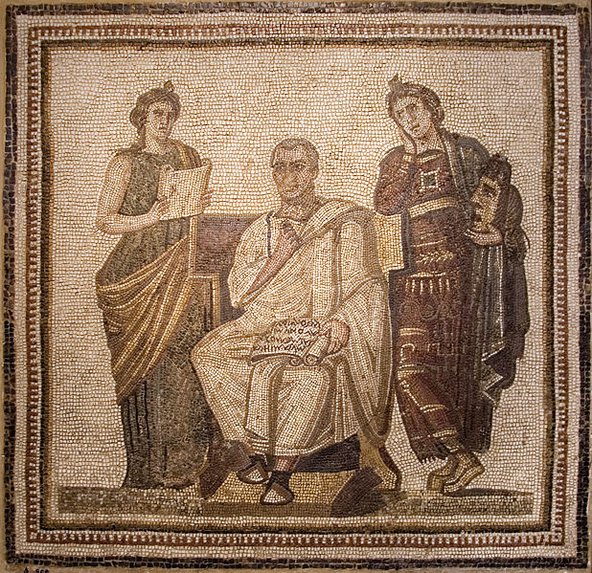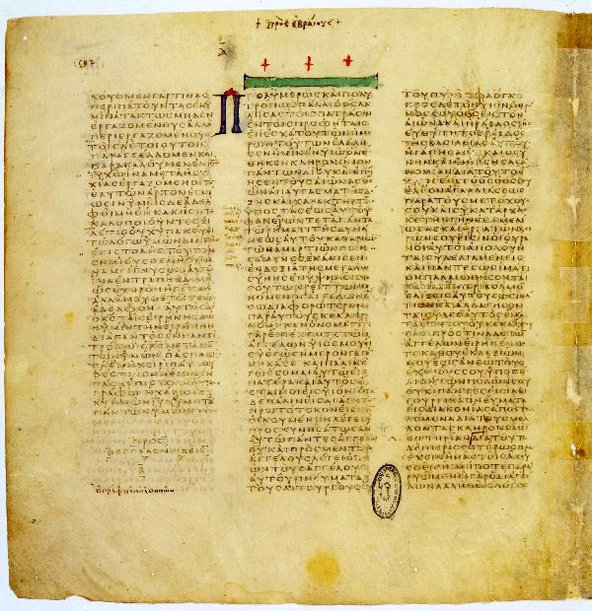When e-readers first appeared, the end of traditional books was widely prophesied. Parallels were drawn with the invention of printing, which rapidly made handwritten manuscripts obsolete. But now, with paper book sales rebounding, it looks as though we have entered a period of stable co-existing technologies, in which the same books are often available in both formats and users can choose whichever they prefer. This situation resembles the one that prevailed almost two thousand years ago, when the ‘book’ in our sense was first invented.
Our paper books come in many shapes and sizes, but they all have certain features in common. A set of pages, each with text on both sides, is held together by a spine and protected by stiff covers. The book can be opened at any point and will naturally hold a bookmark left between the pages, making it easy to stop reading, put the book away, and start again later from the same page. By numbering the pages and including a table of contents, a book producer can make it easy for a reader to locate a particular section, even in an unfamiliar volume.
Bookrolls used in Roman times

Back when the young Julius Caesar was learning to read, books had none of these features. They came in long rolls, with the text written in a series of columns on the inside of the roll; the outside was left blank. You started reading at the left-hand end, unrolling the book with your right hand and rolling it up again with your left. By the time you reached the end you had rolled the book up backwards; to access the beginning again you would need to re-roll the entire thing, which was quite a task given that most bookrolls were about four metres long and some reached a length of over ten metres. Finding something in the middle was not at all easy. If you stopped for lunch while reading a roll, you could of course leave it open to the point you had reached and pick it up again after lunch, but taking a longer break from reading was risky.
Without the built-in covers of a modern book, bookrolls were delicate and easily damaged; they were normally kept in hard cases or boxes for protection. To read a roll, you had to take it out of its case, and you could not put it back in until you had rolled it back into a single cylinder: to leave it open at a particular point, you had to leave it unprotected. And while you could try to put a bookmark in, it would probably not stay put during the rerolling process. The combined force of these problems meant that readers did not often try to dip into books at particular points: bookrolls usually contained just one work each and were intended to be read through from beginning to end, and indeed their producers did not bother to include tables of contents or conspicuous section headings.
Invention of the codex

The modern book format was invented by the Romans, who called it a ‘codex’. There was great excitement in literary circles about the possibilities offered by the codex. Initially, the most obvious improvement was that this format allowed both sides of the writing material to be used, with the result that the same amount of parchment or papyrus (an ancient equivalent of paper) could hold twice as many words. Since parchment and papyrus were both expensive, this change made books cheaper. And while bookrolls had a natural maximum length – ones over four metres were rare because they were so difficult to use – codices could come in almost any size. So, works like Virgil’s Aeneid, which had previously been issued as sets of multiple bookrolls, could now be fitted into a single volume. Other advantages became more obvious as time went on, including one of great importance for us: with normal usage, codices last much longer than rolls. Many manuscripts in codex form have survived in libraries for a thousand years, and some even longer, preserving the great works of Greco-Roman antiquity for medieval and now for modern readers. By contrast, the usual lifespan of a bookroll containing the same works was rarely much longer than a century.
Evolution of the book
Despite these advantages, codices did not immediately replace rolls as the usual format for books. Many readers apparently liked their bookrolls (which weighed much less than codices) and had little interest in preserving literature for distant future generations. A bookroll was also easier to make: you could buy pre-made four-metre rolls and just copy into them whatever book you wanted. By contrast, to make a codex you normally had to copy onto unbound pages (in a peculiar order, owing to the structure of book quires) and then have them bound by a professional. For several centuries after the invention of the codex, therefore, both formats were in common use. The eventual obsolescence of the roll may not have had anything to do with the inherent advantages or disadvantages of the different book formats. Early Christians seem to have preferred the codex format for their Bible and other religious texts, perhaps to distinguish these from Jewish sacred texts, which traditionally used the roll format. The massive spread of Christianity may have been the primary cause of the success of the codex; if Christianity had remained a minority religion, we might still have bookrolls as well as codices available today.
Now that we are once again in a world that offers readers a choice of book formats, we have the opportunity to enjoy a kind of flexibility that last existed close to fifteen hundred years ago, and to appreciate afresh the special features of the codex.
Eleanor Dickey FBA is Professor of Classics at the University of Reading. She was elected a Fellow of the British Academy in 2014.


